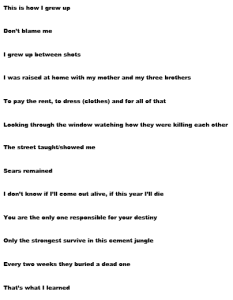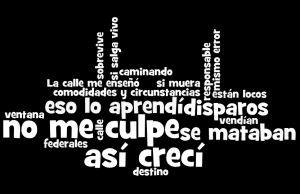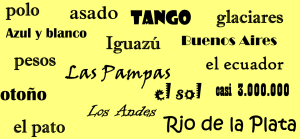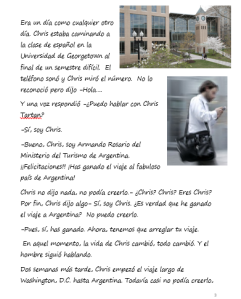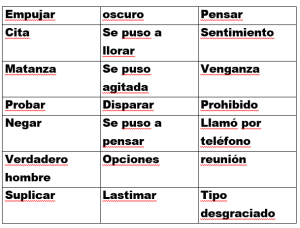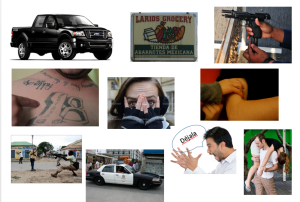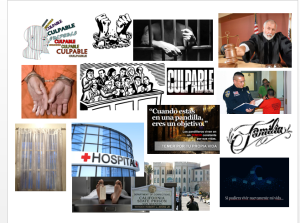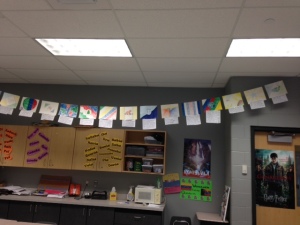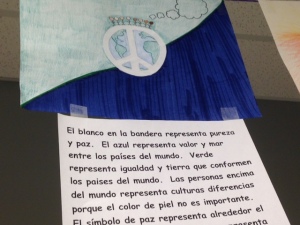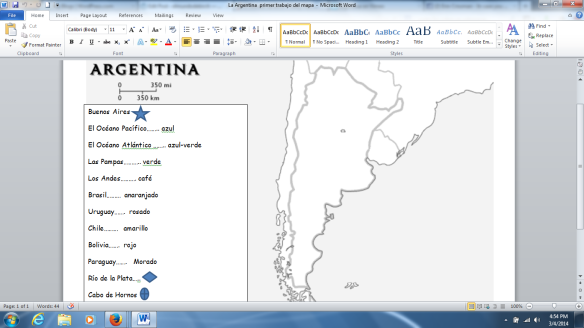If you are a follower of this blog, you know that I teach with music all of the time. I recently started teaching the Narcoviolencia unit for the fifth time. I owe a tremendous debt of gratitude to Kara Jacobs and Cristina Zimmerman for everything that they have shared with me in the past and this year. The second half of the school year with Spanish IV has been transformed in the last two years with the addition of the novel Vida y Muerte en la Mara Salvatrucha. That has consequently changed the way I enter the Narcoviolencia unit. We went from dreams and goals (right after the Christmas break) to the dreams and goals in El Salvador, via a study of their Civil War, the movie Voces Inocentes and then the novel. This was followed, very logically, by a unit on immigration, which now leads into Narcoviolencia. The unit this year was enhanced dramatically by two incredibly moving songs that were released in the last year and a half: La Patria Madrina (Lila Downs and Juanes) and Lágrimas (Camila). Kara and Cristina have created a spectacular study of La Patria Madrina (which is the second song in this unit). I am going to share how I have used Lágrimas, one of the most powerful, haunting songs I have experienced in Spanish, to make the transition from Immigration to Narcoviolencia.
This was the objective:
Students will identify the viewpoint and the perspectives in the lyrics and the video. Students will continue to add to and to refine their knowledge of immigration issues, roots, causes and impact while beginning to understand the depth of the violence in México and how it impacts the people of México and the United States.
These were the steps that I used:
Day One
- I made a Lágrimas with the images from the official video and inserted just the instrumental version of the song. They did not know the title of the song. I had students watch and listen to it just once and had them react in small groups to what they had seen and how they felt. We then shared as a class. Disclaimer: the images are NOT MINE. They are taken directly from the official video released by Camila.
- We watched a second time, completing a Lagrimas chart for ppt that listed
- Places
- Colors
- People
- Feelings
- Verbs
- Words they wanted to know how to say
- We reviewed their charts. Working with a partner, they wrote a brief response to the question “¿Qué está sucediendo en esta presentación?” I also asked them to create a title for the song. The results were powerful and impressive: Corazón roto, Quiero quedarme pero voy a huir, Amor traicionado, Involucrado, No hay nada que decir, Dolor que me mata, Tristeza sin palabras, etc.
- I intended for the next step to be a “free write”, but with a partner, using the images to create sentence fragments, poetry, or a smash doodle, to express what they saw and felt. However, the discussion over what was happening in the video, and the naming of the song with the resulting discussion, just took more time than I anticipated. 5. We then watched the official video.
Day Two
- We completed the first cloze (Lágrimas Cloze 1 and Cloze 2) for the song. Working with a partner or two, each group created their own translation of the lyrics.
- We read one of the Lagrimas article and interview about or with, Camila.
- We sang the song.
Day Three
- We completed a second cloze (Lágrimas Cloze 1 and Cloze 2) for the song. They worked revising their own translation of the lyrics.
- We sang it again.
- Working with the lagrimas images 2 from the opening day powerpoint, they selected about five of them and captioned them with detailed sentences using rich vocabulary.
The emotional impact of this song was enormous. Most of my students absolutely loved the haunting melody, and told me that once it was in their heads, they couldn’t get it out. The imagery from the video and the discussions that we had made Lágrimas, for us, a very fitting, somber way to enter this unit.

